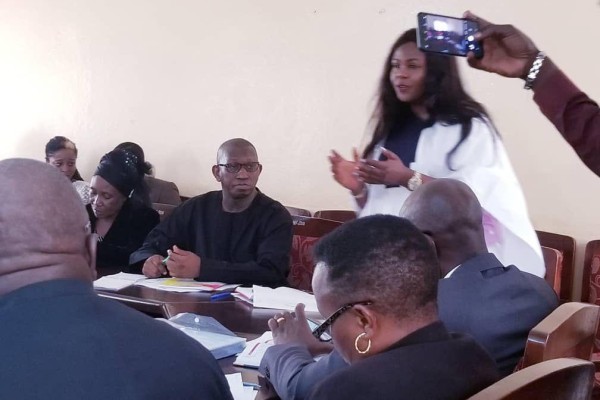Real change begins close to home. When schools, nonprofits, and faith communities create space for lived experience, pride grows, bias shrinks, and leadership multiplies. If you are wondering how to amplify African diaspora voices in communities, the most powerful tools are listening, co-creation, and consistent follow-through. This guide offers a practical plan you can start within ninety days, using resources you already have.
Guiding principles
- Start with listening. Invite residents, students, parents, and elders to share hopes and concerns before you design anything.
- Share power. Co-chair committees with community members, not only professionals.
- Honor time. Pay stipends, provide food, offer childcare, and schedule at accessible hours.
- Protect dignity. Set clear norms about consent, privacy, and how stories are used.
A 90-day launch plan
Phase 1: Listen and map needs (Weeks 1 to 3)
Hold two listening circles at partner sites. Ask three questions: What stories are missing from public life here? What support would help people share them? What would success look like in one year? Collect names of potential mentors and youth leaders. Begin planning storytelling projects for African diaspora students that fit local interests, such as oral history or digital media.
Phase 2: Co-create programs (Weeks 4 to 8)
Form a small steering group with students, parents, educators, and faith leaders. Draft a calendar of events and a budget. Identify two starter tracks: a youth leadership cohort and a women’s leadership cohort. When you design women empowerment programs for African diaspora youth, include skill building, paid shadow days with local businesses, and intergenerational mentorship.
Phase 3: Share and celebrate (Weeks 9 to 12)
Host a community showcase where participants present short talks, videos, or mini exhibits. Invite local media, city officials, and school boards. End with sign-ups for the next cycle, so momentum continues.
Program toolbox
- Microgrants. Offer small grants for student projects, from podcast equipment to exhibit printing.
- Mentor matching. Pair youth with professionals who share interests in health, tech, arts, or trades.
- Safe space agreements. Co-author guidelines on respectful dialogue and consent for recording.
- Compensation. Stipends for youth, honoraria for elders, and transportation vouchers.
Storytelling in practice
Well designed stories change hearts and policies. Try three formats to fit different comfort levels:
- Digital story map. Students and elders record 2 minute stories tied to places on a neighborhood map.
- Living library. Community members serve as “books” you can check out for a 15 minute conversation.
- Stage to page. Use poetry nights or short monologues, then publish a small zine.
These are practical storytelling projects for African diaspora students that center identity, history, and joy while building transferable skills in writing, audio, and design.
Youth leadership that lasts
Create a 12 to 16 week cohort that meets weekly.
- Skills: public speaking, meeting facilitation, advocacy basics, and media literacy.
- Practice: youth co-host panels, introduce speakers at city events, and present to the school board.
- Support: stipends, snacks, and a quiet study room before sessions.
- Safety: training on digital privacy and boundaries with media.
Centering women’s leadership
Many communities thrive when women lead. Design women empowerment programs for African diaspora youth with three layers:
- Mentorship pairs. Match teens with women leaders in business, health, education, arts, or public service.
- Career shadowing. Paid half-day shadows with clear learning goals and reflection prompts.
- Wellbeing. Sessions on stress, confidence, and navigating bias, plus optional counseling referrals.
Build strong partnerships
- Schools can provide space, credits for service learning, and access to teachers who advise projects.
- Nonprofits can handle stipends, grants, and volunteer onboarding.
- Faith communities can offer intergenerational connectors, venues, and networks of care.
Create simple memoranda of understanding so roles and data practices stay clear.
Measure what matters
Track both numbers and stories.
- Participation: youth engaged, mentors matched, sessions completed.
- Representation: how many events feature diaspora speakers or student panels.
- Reach: audience size at showcases, press mentions, and policy invitations.
- Shift: quick pre and post surveys on belonging and confidence, plus quotes that show growth.
Sustain and scale
Publish an annual calendar with two program cycles and one citywide showcase. Train returning youth as peer coaches. Apply for local arts, education, or health grants. Invite small business sponsors to fund microgrants or provide in-kind printing, space, or supplies.
Bring it home
Amplification is not a one day event. It is a set of habits that treat culture bearers as co-designers, not guests. Start with one listening circle, one mentor match, and one public showcase. If you keep that rhythm, you will learn how to amplify African diaspora voices in communities in ways that feel authentic, respectful, and repeatable. The result is a local ecosystem where stories guide decisions and young leaders see a future with their names on it.

